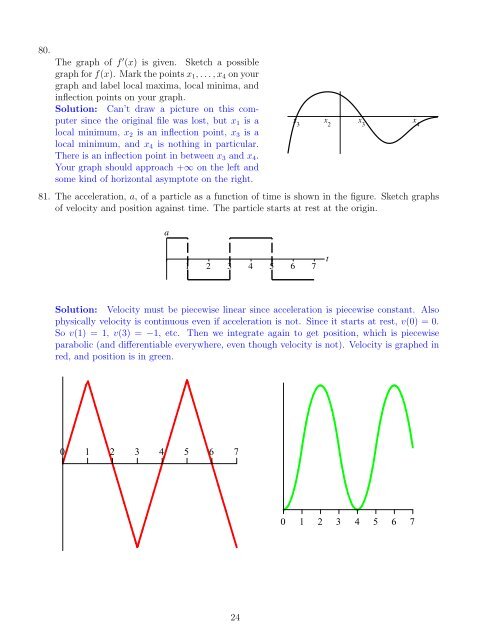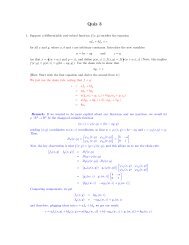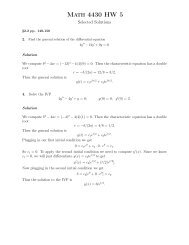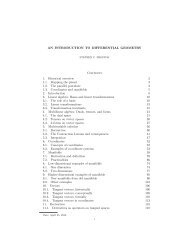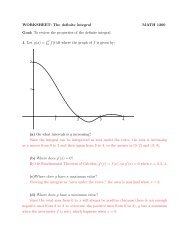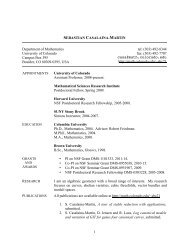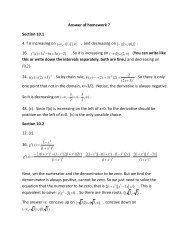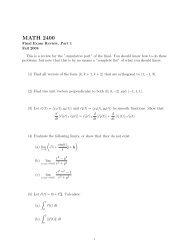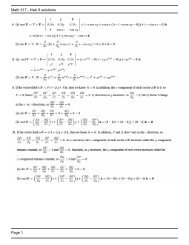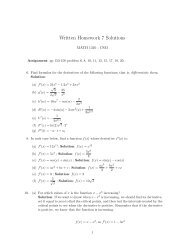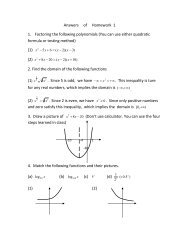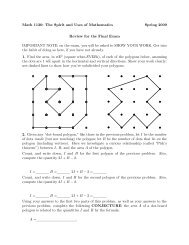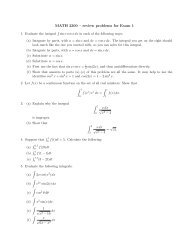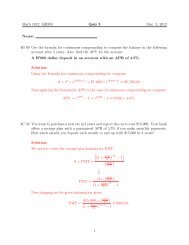Answers to Review Sheet for Final Exam
Answers to Review Sheet for Final Exam
Answers to Review Sheet for Final Exam
Create successful ePaper yourself
Turn your PDF publications into a flip-book with our unique Google optimized e-Paper software.
80.<br />
The graph of f ′ (x) is given. Sketch a possible<br />
graph <strong>for</strong> f(x). Mark the points x1, . . . , x4 on your<br />
graph and label local maxima, local minima, and<br />
inflection points on your graph.<br />
Solution: Can’t draw a picture on this computer<br />
since the original file was lost, but x1 is a<br />
local minimum, x2 is an inflection point, x3 is a<br />
local minimum, and x4 is nothing in particular.<br />
There is an inflection point in between x3 and x4.<br />
Your graph should approach +∞ on the left and<br />
some kind of horizontal asymp<strong>to</strong>te on the right.<br />
81. The acceleration, a, of a particle as a function of time is shown in the figure. Sketch graphs<br />
of velocity and position against time. The particle starts at rest at the origin.<br />
Solution: Velocity must be piecewise linear since acceleration is piecewise constant. Also<br />
physically velocity is continuous even if acceleration is not. Since it starts at rest, v(0) = 0.<br />
So v(1) = 1, v(3) = −1, etc. Then we integrate again <strong>to</strong> get position, which is piecewise<br />
parabolic (and differentiable everywhere, even though velocity is not). Velocity is graphed in<br />
red, and position is in green.<br />
0 1 2 3 4 5 6 7<br />
24<br />
0 1 2 3 4 5 6 7


